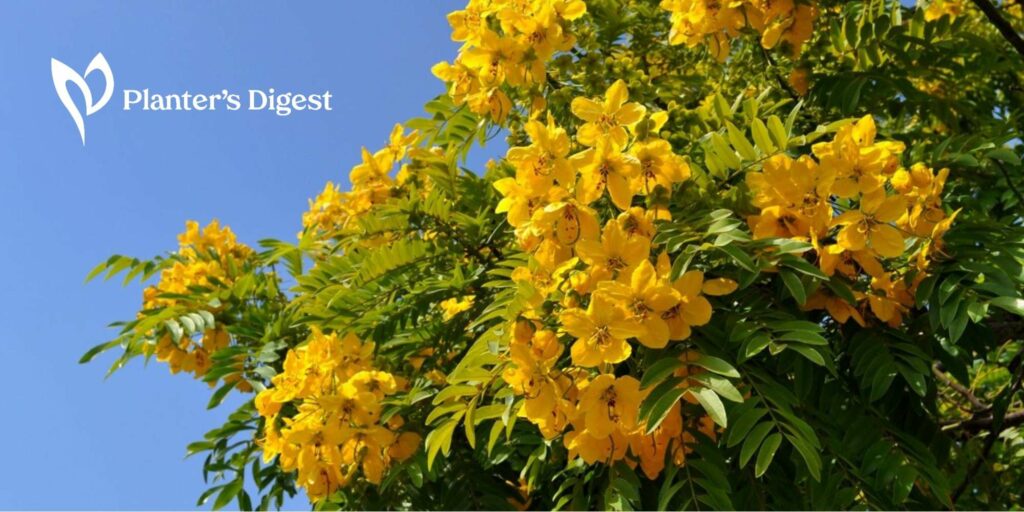They say yellow is the color of happiness, and what better form for it to come in than as flowers? While some add fragrance to their appeal, all of these trees produce flowers bursting with spots of yellow sunshine!
Let’s take a good look at 25 of our favorites.
Golden Shower Tree (Cassia fistula)
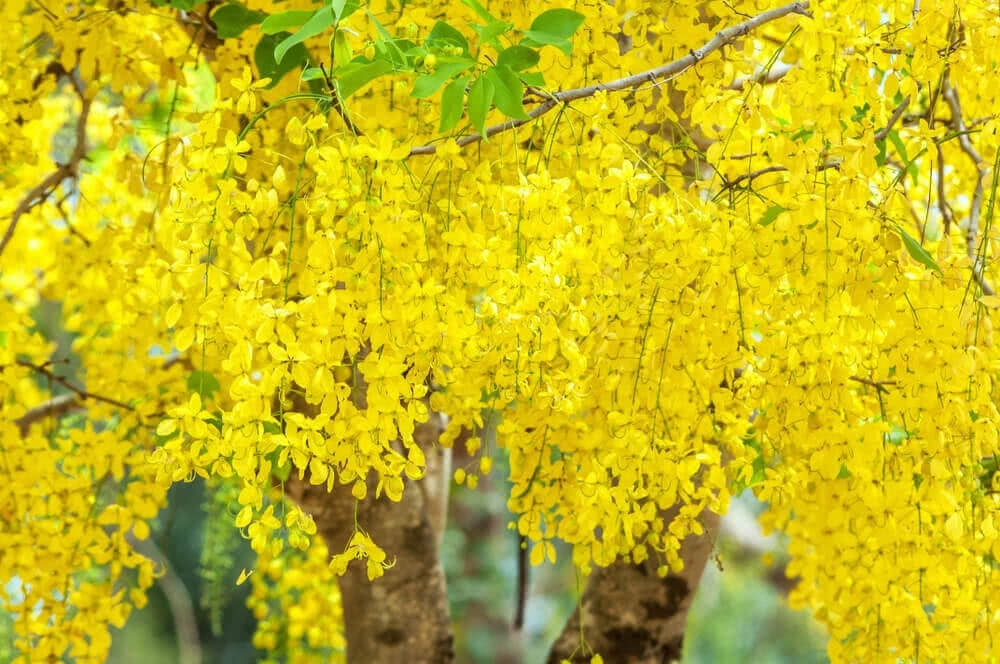
| Factor | Information |
| Ease of Growing | Easy ●○○○○ |
| USDA Zone | 10 to 12 |
| Light | Full sun to partial shade |
| Soil | Well-draining, loamy soil |
| Watering | Moderate |
| Height | 25 to 40 feet (7.6 to 12 meters) |
| Blooming Season | Late spring to early summer |
| Possible Risks | Susceptible to root rot in overly wet conditions |
The Golden Shower Tree grows fast, with yellow flowers, and needs little care. It grows 2 to 3 feet a year and has medicinal uses.
Watch for root rot in wet soil. Make sure to prune regularly for overall health and a great floral display each year.
Forsythia (Forsythia spp.)
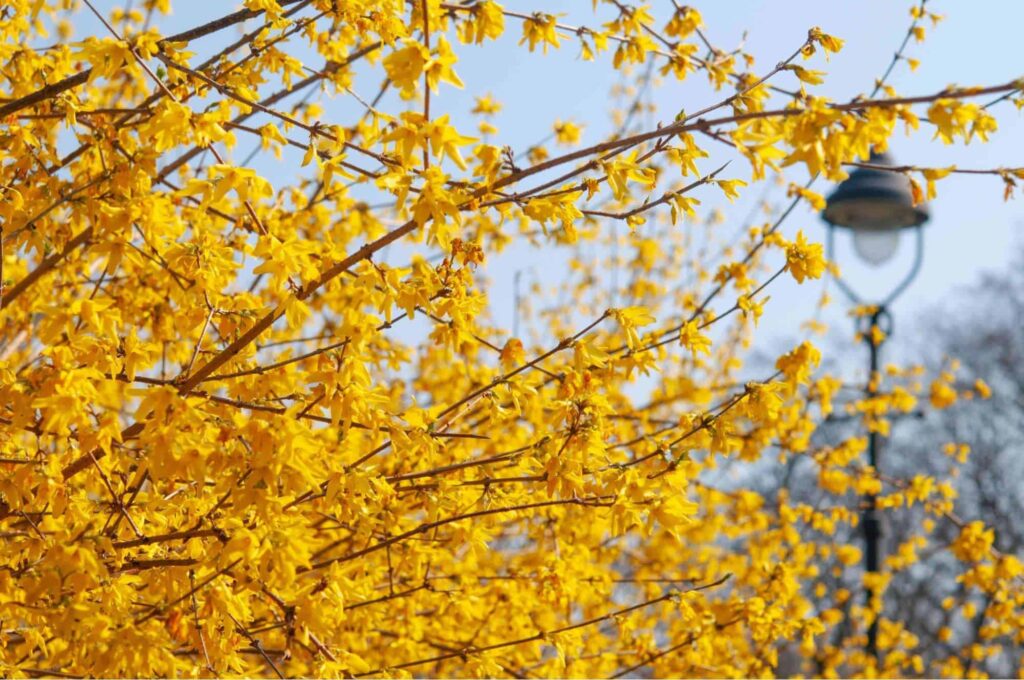
| Factor | Information |
| Ease of Growing | Easy ●○○○○ |
| USDA Zone | 5 to 8 |
| Light | Full sun to light shade |
| Soil | Well-drained, average soil |
| Watering | Moderate |
| Height | 6 to 10 feet (1.8 to 3 meters) |
| Blooming Season | Early spring |
| Possible Risks | Prone to aphid infestations |
Forsythia is a deciduous shrub with vibrant yellow flowers that signal the arrival of spring. It’s easy to grow and adapts well to various soils but prefers well-drained ones.
Low-maintenance, it needs moderate watering and adapts to different light conditions. Typically 6 to 10 feet tall, it blooms abundantly in early spring as its arching branches make it great for hedges or standalone specimens in gardens.
Laburnum (Laburnum spp.)
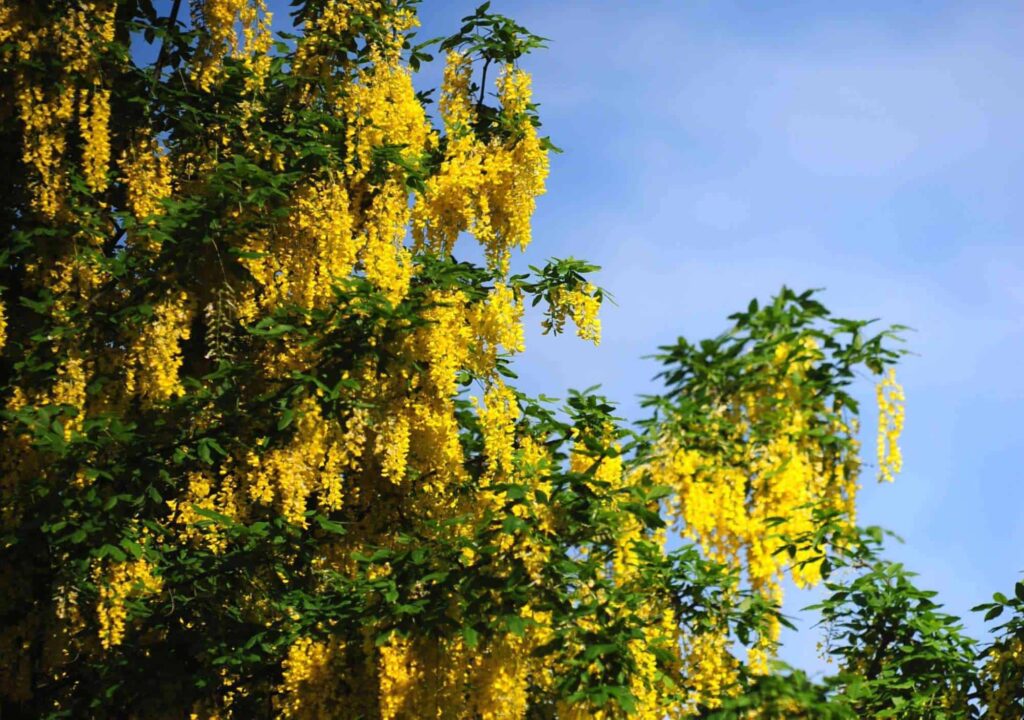
| Factor | Information |
| Ease of Growing | Moderate ●●○○○ |
| USDA Zone | 5 to 7 |
| Light | Full sun |
| Soil | Well-drained, fertile soil |
| Watering | Moderate |
| Height | 15 to 25 feet (4.5 to 7.6 meters) |
| Blooming Season | Late spring to early summer |
| Possible Risks | All parts are toxic if ingested |
Also known as the Golden Chain Tree, Laburnum is a deciduous tree that grows easily in full sun and well-drained soil. Just note that all parts of the tree are toxic if ingested.
Regular pruning ensures a good shape of the tree as well as robust overall health. Laburnum is popular in parks and gardens for its elegant and vibrant flowers.
Tulip Tree (Liriodendron tulipifera)
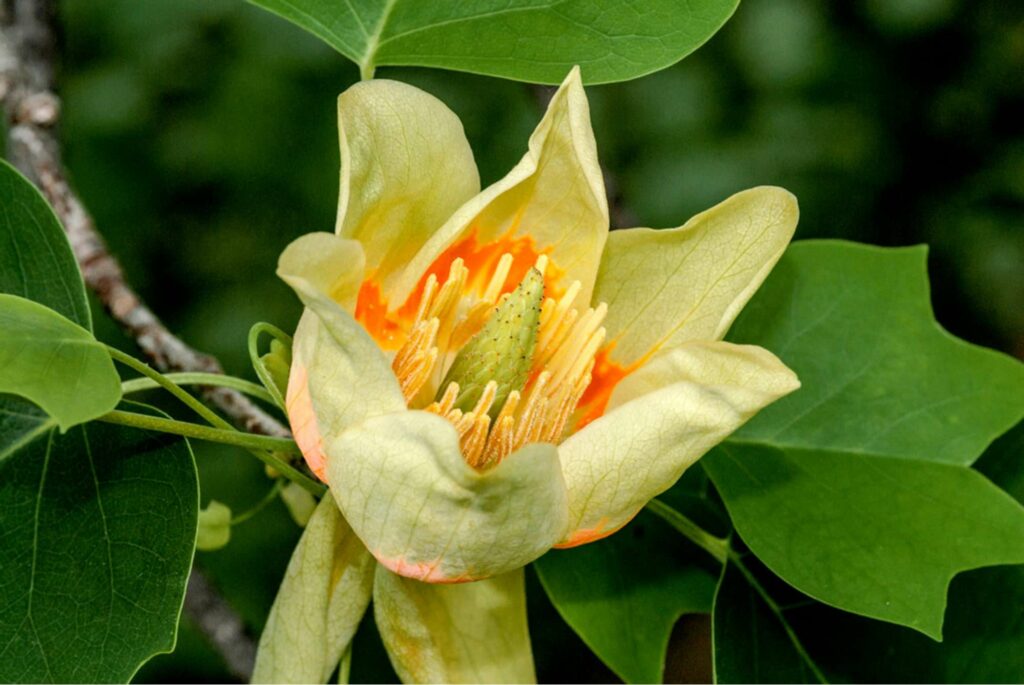
| Factor | Information |
| Ease of Growing | Easy to Moderate ●●○○○ |
| USDA Zone | 4 to 9 |
| Light | Full sun |
| Soil | Well-drained, fertile soil |
| Watering | Moderate |
| Height | 70 to 90 feet (21 to 27 meters) |
| Blooming Season | Late spring to early summer |
| Possible Risks | Susceptible to aphids and scale insects |
The Tulip Tree, or Yellow Poplar, is a tall deciduous tree with distinctive tulip-shaped flowers. Often used in landscaping, it provides shade and enhances parks and large gardens.
Its wood is light and easy to work with. It’s commonly used for making furniture, musical instruments, and as pulpwood for paper.
Mimosa Tree (Albizia julibrissin)
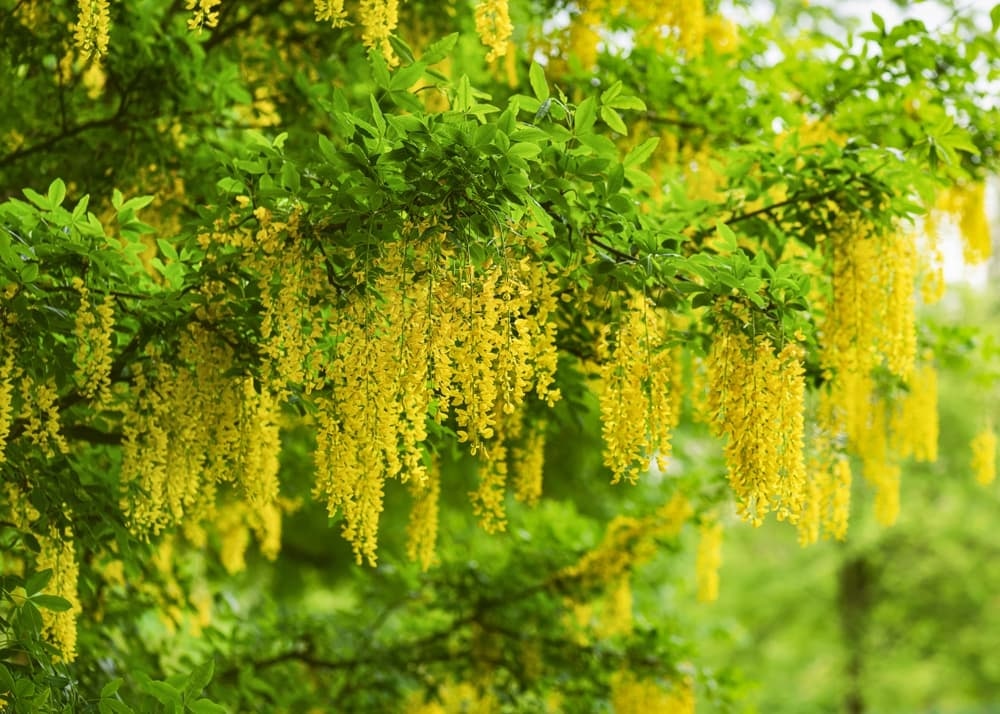
| Factor | Information |
| Ease of Growing | Easy ●○○○○ |
| USDA Zone | 6 to 9 |
| Light | Full sun to partial shade |
| Soil | Well-drained, moderately fertile soil |
| Watering | Moderate |
| Height | 20 to 40 feet (6 to 12 meters) |
| Blooming Season | Summer |
| Possible Risks | May be invasive in some regions |
Mimosa Trees grow fast, around 3 feet a year, and need minimal care once established. Prune occasionally for shape and remove dead branches.
They’re ornamental, with pink flowers in summer, attracting bees and butterflies. They close their leaves at night, in cloudy weather, or even when touched, responding to the environment.
Yellow Elder (Tecoma stans)
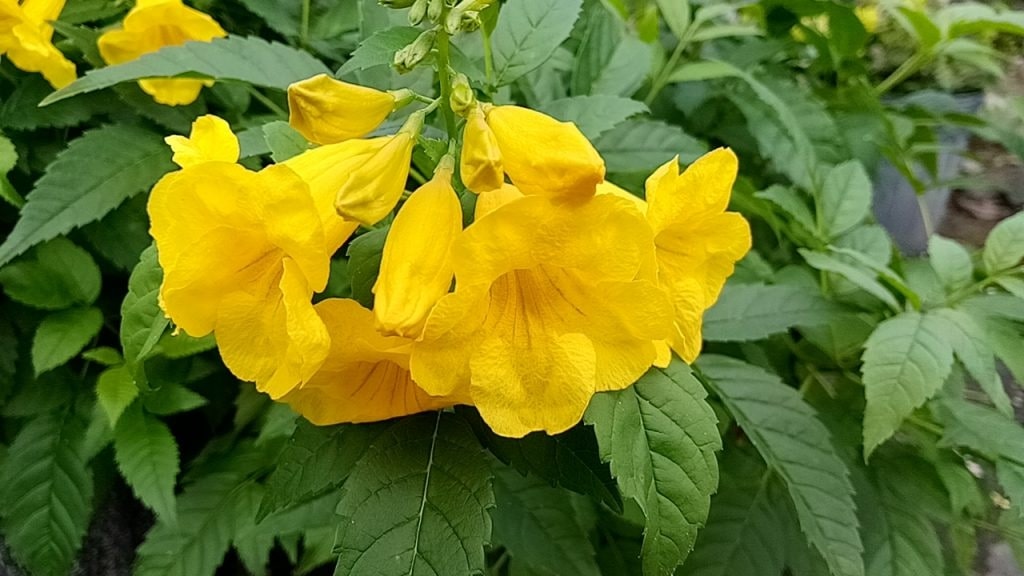
| Factor | Information |
| Ease of Growing | Easy ●○○○○ |
| USDA Zone | 9 to 11 |
| Light | Full sun |
| Soil | Well-drained soil |
| Watering | Low to moderate |
| Height | 10 to 20 feet (3 to 6 meters) |
| Blooming Season | Spring to fall |
| Possible Risks | Resistant to pests and diseases |
Yellow Elder is an easy-to-care-for shrub that likes sunny, well-drained spots. With moderate watering needs, it’s good for dry climates.
It brings a cheerful burst of yellow blooms all season. This is one of the most appealing reasons why it’s often found in gardens.
Yellow Magnolia (Magnolia acuminata)
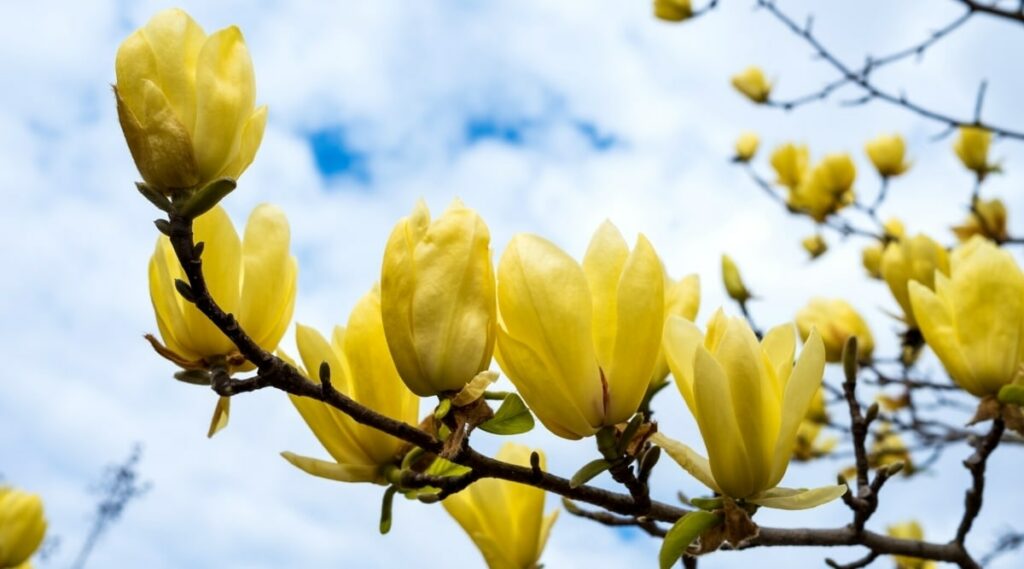
| Factor | Information |
| Ease of Growing | Moderate to Difficult ●●●●○ |
| USDA Zone | 4 to 8 |
| Light | Partial shade to full sun |
| Soil | Moist, well-drained soil |
| Watering | Regular |
| Height | 60 to 80 feet (18 to 24 meters) |
| Blooming Season | Late spring to early summer |
| Possible Risks | Susceptible to pests, particularly magnolia scale |
Yellow Elder is an easy-to-care-for shrub that likes sunny, well-drained spots. With moderate watering needs, it’s good for dry climates.
Often used for landscaping, it brings a cheerful burst of yellow blooms all season. We suggest growing this for experienced homeowners or for those looking for a bit of a challenge.
Silver Wattle (Acacia dealbata)
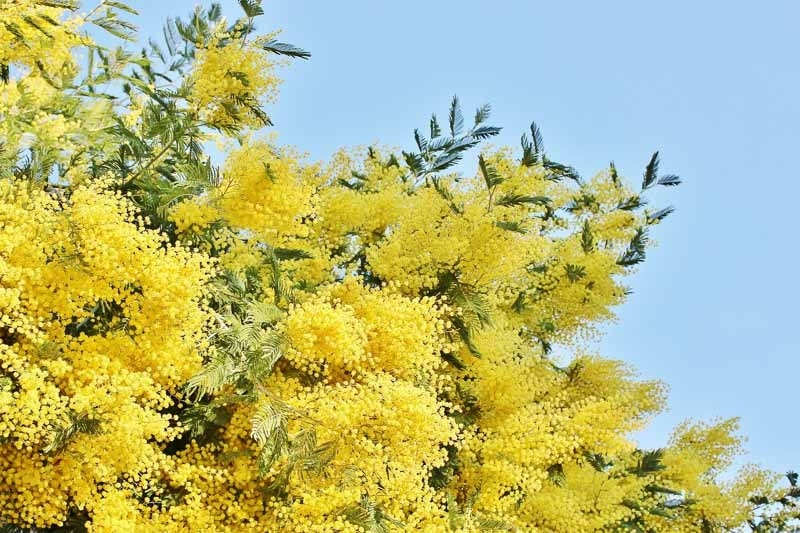
| Factor | Information |
| Ease of Growing | Easy ●○○○○ |
| USDA Zone | 8 to 11 |
| Light | Full sun to partial shade |
| Soil | Well-draining, acidic to neutral soil |
| Watering | Moderate |
| Height | Up to 100 feet (30 meters) |
| Blooming Season | Late winter to early spring |
| Possible Risks | None significant |
Silver Wattle attracts people and pollinators with its sweet-scented flowers. Silver Wattle is low-maintenance, needing moderate watering and occasional pruning for shape.
Silver Wattle grows rapidly, making it perfect for quickly establishing a lush landscape. Primarily an ornamental tree, Silver Wattle is also valued for its timber and is suitable for beekeeping due to its fragrant flowers.
Golden Chain Tree (Laburnum anagyroides)
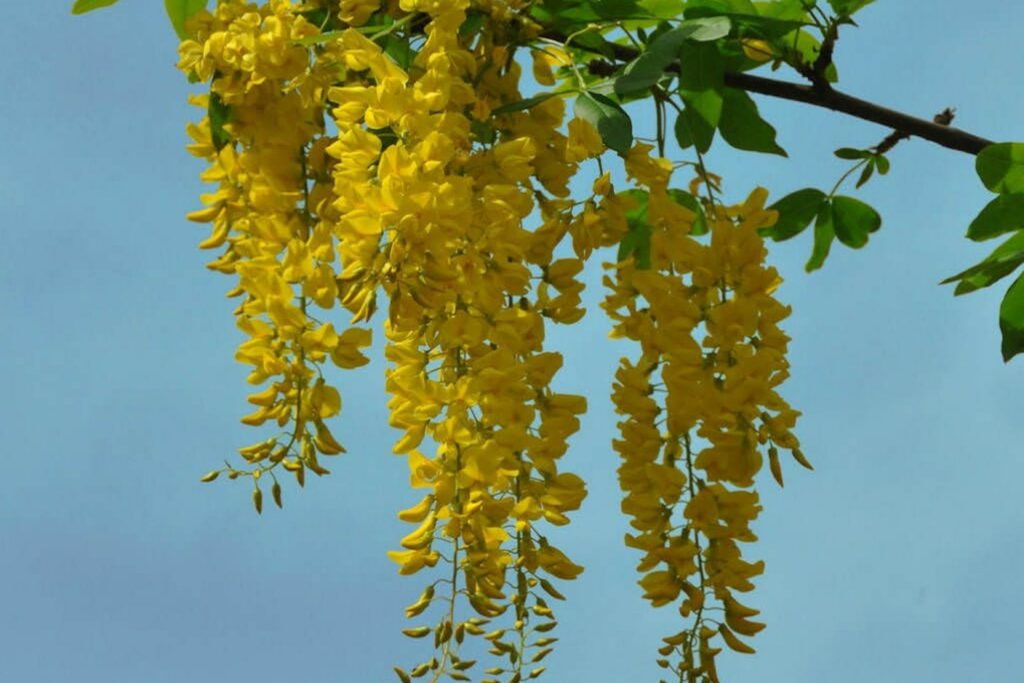
| Factor | Information |
| Ease of Growing | Easy ●○○○○ |
| USDA Zone | 5 to 7 |
| Light | Full sun |
| Soil | Well-drained, average soil |
| Watering | Moderate |
| Height | 15 to 25 feet (4.5 to 7.6 meters) |
| Blooming Season | Late spring to early summer |
| Possible Risks | All parts are toxic if ingested |
The Golden Chain Tree is a deciduous tree that’s easy to grow, thriving in full sun and well-drained soil. Just be careful as it’s toxic if ingested but popular for ornamental use in gardens and parks.
It has a moderate growth rate, low maintenance, and is valued for its aesthetic appeal. The name comes from its long chains of yellow flowers, and it belongs to the pea family.
Trumpet Tree (Tabebuia spp.)
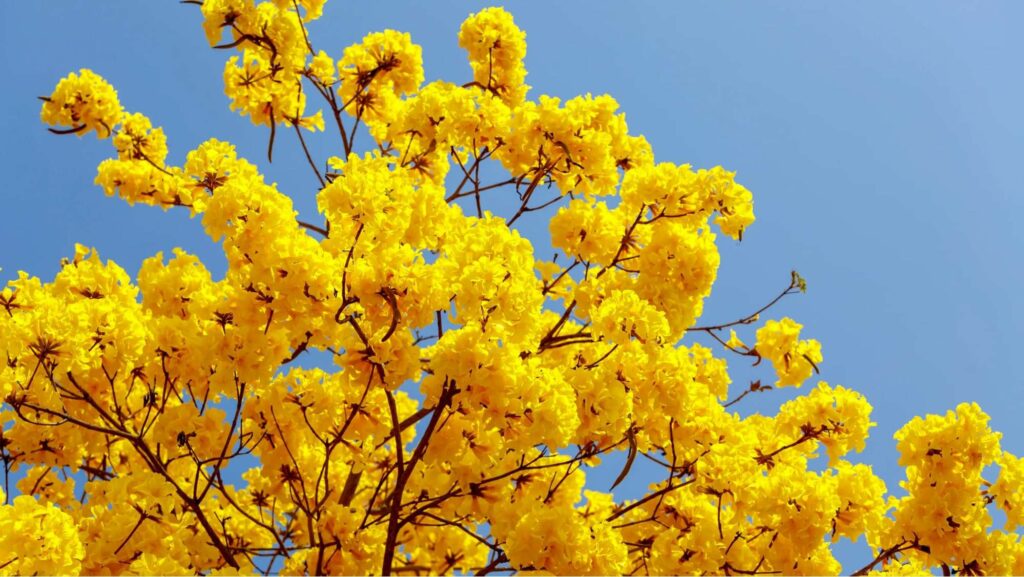
| Factor | Information |
| Ease of Growing | Moderate ●●○○○ |
| USDA Zone | 9 to 11 |
| Light | Full sun |
| Soil | Well-draining soil, tolerant of various types |
| Watering | Low to moderate |
| Height | 20 to 30 feet (6 to 9 meters) |
| Blooming Season | Spring to early summer |
| Possible Risks | Generally pest-resistant |
The Trumpet Tree is a deciduous tree in the Tabebuia genus. It’s easy to grow, thriving in full sun and well-draining soil with various flower colors, making it a great choice for landscaping in tropical regions.
Moderately growing, the Trumpet Tree steadily establishes itself, showcasing an impressive floral display. Trumpet Tree flowers are used in traditional medicine, and some species are known for drought tolerance in arid conditions.
Yellow Buckeye (Aesculus flava)
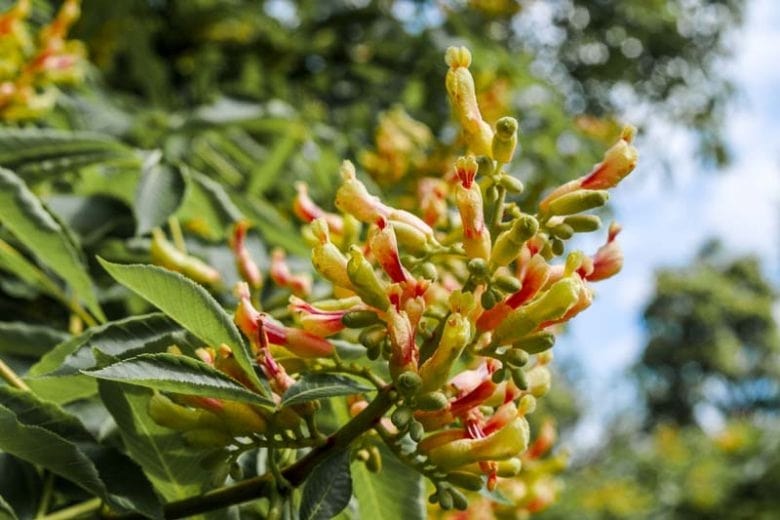
| Factor | Information |
| Ease of Growing | Moderate ●●○○○ |
| USDA Zone | 4 to 8 |
| Light | Full sun to partial shade |
| Soil | Well-draining, moist soil |
| Watering | Moderate to high |
| Height | 50 to 75 feet (15 to 23 meters) |
| Blooming Season | Late spring to early summer |
| Possible Risks | Susceptible to leaf blotch and powdery mildew |
Yellow Buckeye is a deciduous tree that’s commonly used for shade and ornamental value in parks and large gardens. The name “flava” means yellow, reflecting its vibrant flowers.
Wildlife enthusiasts appreciate the tree for its nuts as it provides ecological value.
Palo Verde (Parkinsonia spp.)
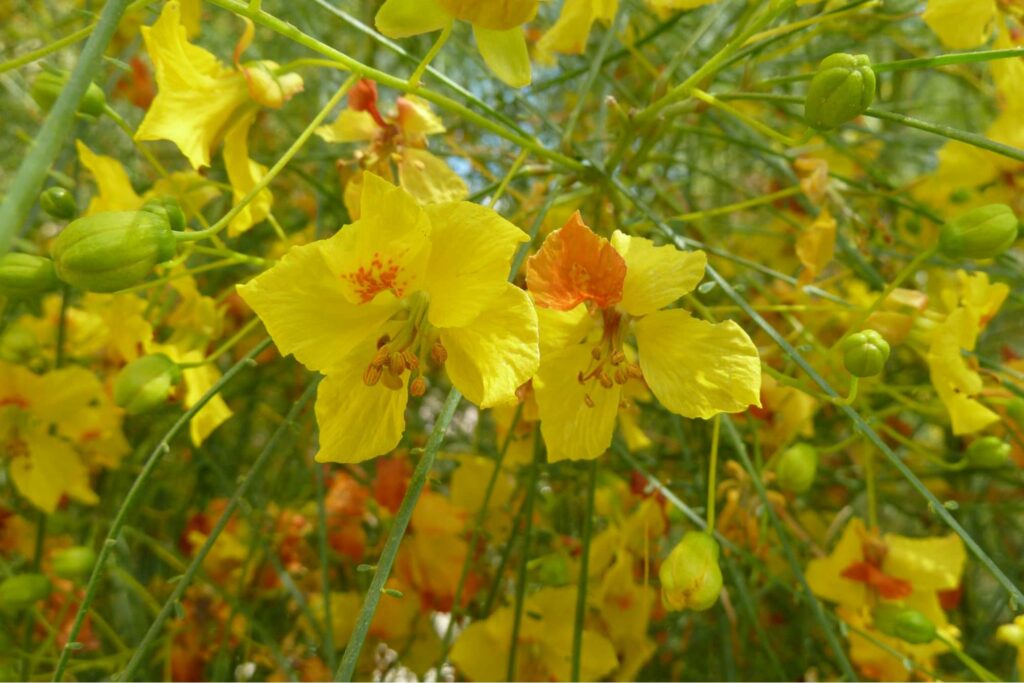
| Factor | Information |
| Ease of Growing | Easy ●○○○○ |
| USDA Zone | 9 to 11 |
| Light | Full sun |
| Soil | Well-drained, sandy or rocky soil |
| Watering | Low to moderate |
| Height | 15 to 30 feet (4.5 to 9 meters) |
| Blooming Season | Spring to early summer |
| Possible Risks | None significant |
“Palo Verde,” means “green stick” in Spanish. Additionally, it’s the state tree of Arizona in the United States.
It’s pretty much drought-tolerant and a fast-growing tree, perfect for arid landscapes, requiring low to moderate watering. Known for rapid growth, it’s perfect for quick shade and visual appeal.
Being low-maintenance, it needs minimal care, with occasional pruning for shaping. This tree is commonly used in xeriscaping and arid landscaping as it aids in erosion control.
Candle Bush (Cassia alata)
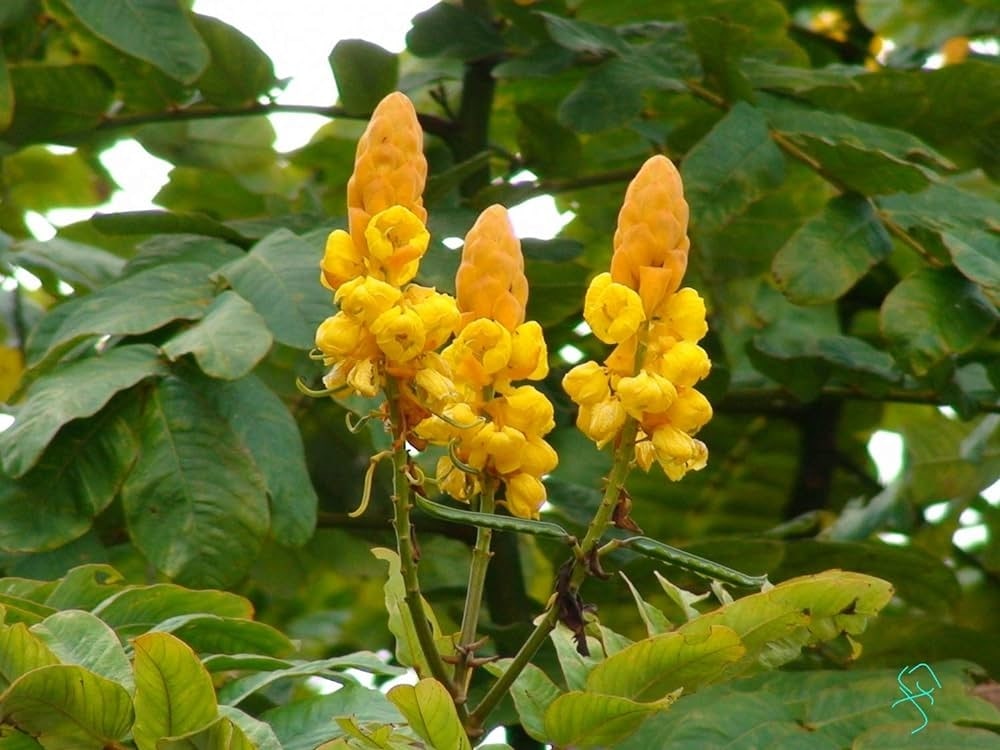
| Factor | Information |
| Ease of Growing | Easy ●○○○○ |
| USDA Zone | 9 to 11 |
| Light | Full sun |
| Soil | Well-drained soil |
| Watering | Moderate |
| Height | Up to 10 feet (3 meters) |
| Blooming Season | Summer |
| Possible Risks | None significant |
This tropical low-maintenance shrub with bright yellow flowers is easy to grow, requires moderate watering, and has a moderate growth rate. Besides being an ornamental shrub, Candle Bush has medicinal uses, with its leaves used in traditional medicine.
The common name comes from its candle-like flower spikes. It’s also known as Ringworm Bush, Senna alata, and Emperor’s Candlesticks.
Yellow Catalpa (Catalpa ovata)
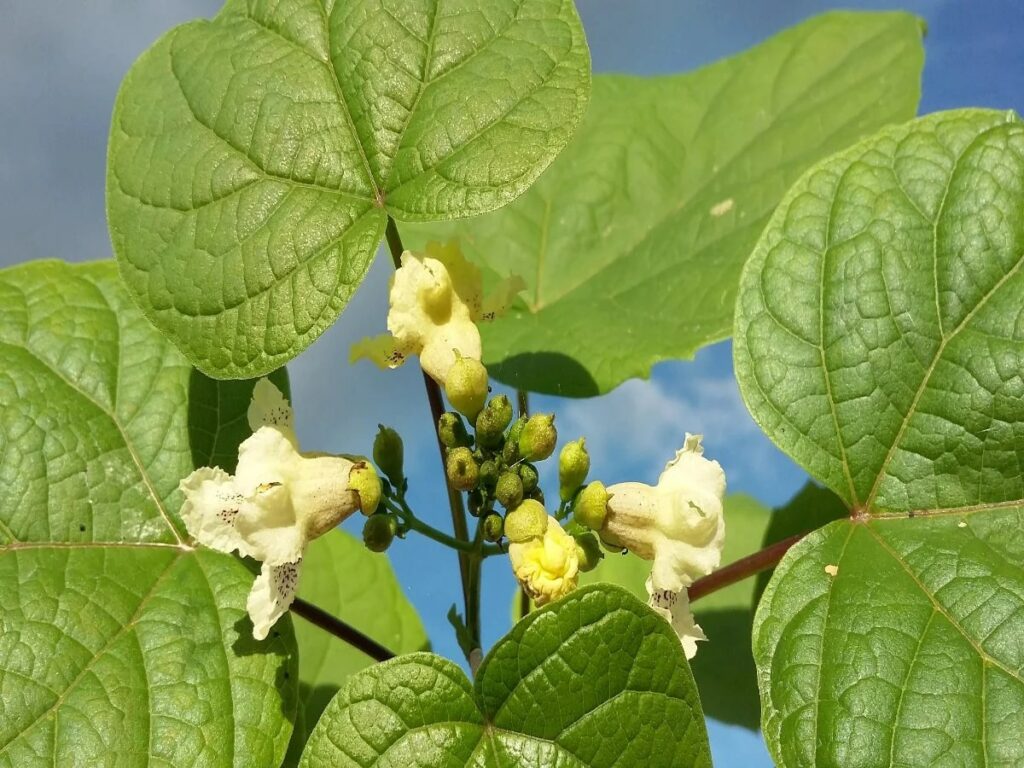
| Factor | Information |
| Ease of Growing | Easy ●○○○○ |
| USDA Zone | 5 to 9 |
| Light | Full sun to partial shade |
| Soil | Well-drained, fertile soil |
| Watering | Moderate |
| Height | 30 to 40 feet (9 to 12 meters) |
| Blooming Season | Late spring to early summer |
| Possible Risks | None significant |
Yellow Catalpa is a deciduous, easy-to-grow tree known for large heart-shaped leaves and showy flowers. It’s perfectly low-maintenance as it needs moderate watering and occasional pruning.
With a moderate growth rate, it’s suitable for various landscapes, making it an attractive ornamental choice in parks and gardens. Native to China and Korea, it’s sometimes called the “Yellow Trumpet Tree” due to its trumpet-shaped flowers.
Kowhai Tree (Sophora spp.)
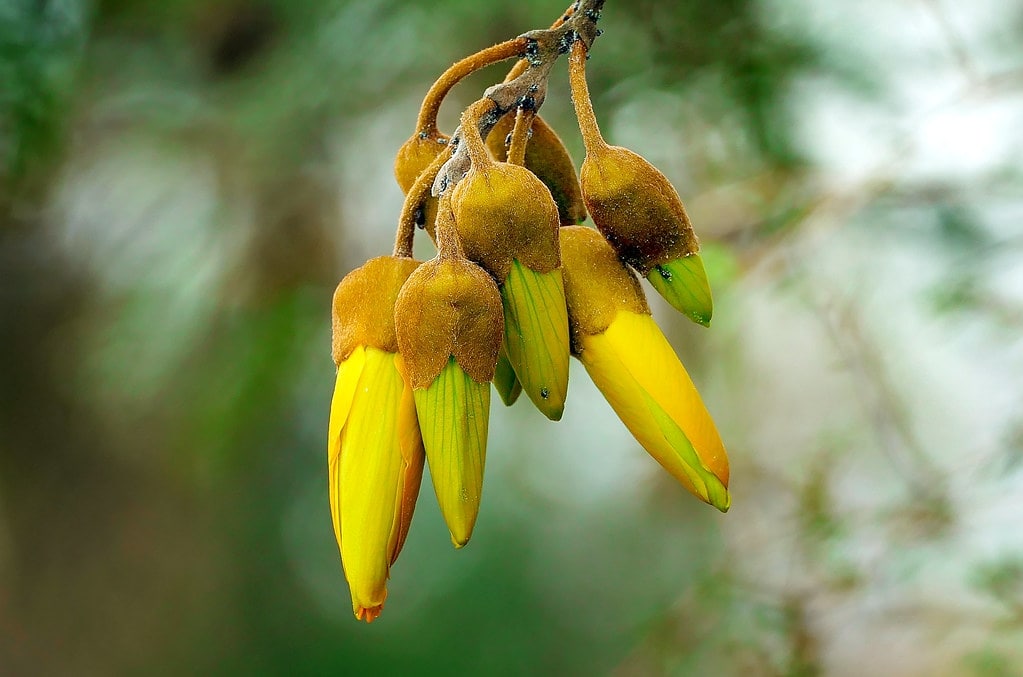
| Factor | Information |
| Ease of Growing | Easy to Moderate ●●○○○ |
| USDA Zone | 8 to 11 |
| Light | Full sun |
| Soil | Well-drained, fertile soil |
| Watering | Moderate |
| Height | 15 to 30 feet (4.5 to 9 meters) |
| Blooming Season | Late winter to early spring |
| Possible Risks | Generally pest-resistant, occasional aphid issues |
The Kowhai Tree has golden-yellow flowers and fern-like leaves. With moderate growth, it’s petty low-maintenance once established although regular pruning helps its shape.
Known for its ornamental value, it holds cultural significance in New Zealand as the national flower and is sometimes used in local woodcraft. The name “Kowhai” means “yellow” in Maori and signals spring’s arrival in New Zealand.
Yellow Poinciana (Peltophorum pterocarpum)
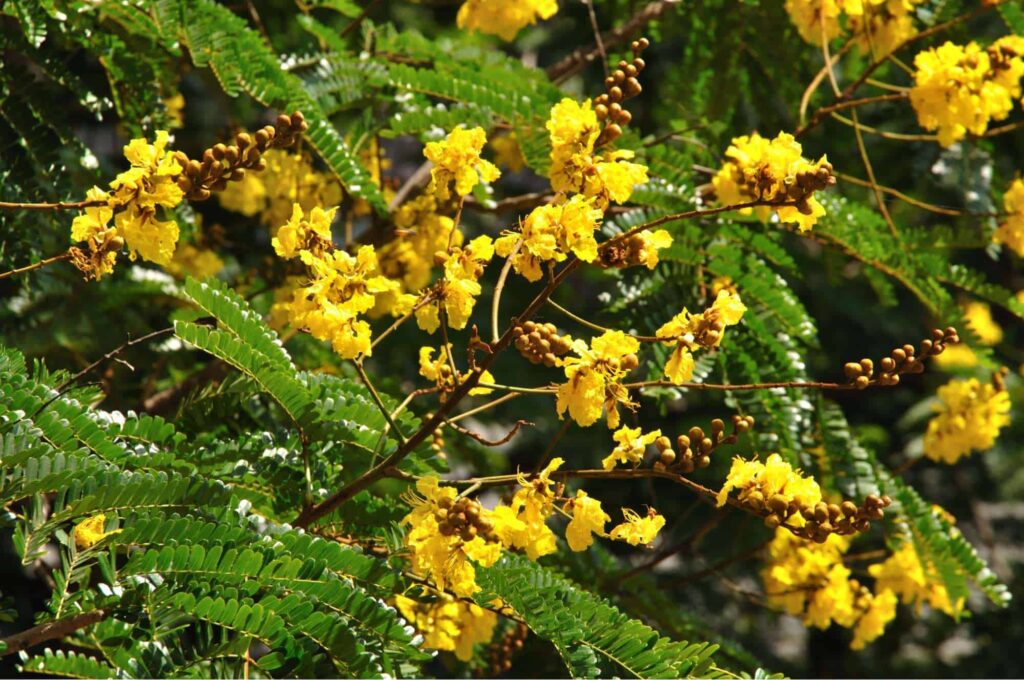
| Factor | Information |
| Ease of Growing | Easy ●○○○○ |
| USDA Zone | 10 to 12 |
| Light | Full sun |
| Soil | Well-draining, sandy to loamy soil |
| Watering | Moderate |
| Height | Up to 50 feet (15 meters) |
| Blooming Season | Late spring to early summer |
| Possible Risks | Generally pest-resistant |
Originating from tropical Americas, the Yellow Poinciana is sometimes called the Yellow Flamboyant. Growing moderately to fast, it establishes quickly and requires minimal care once established.
Used ornamentally in parks and gardens, its wood is durable and used in woodworking. Plus, the Yellow Poinciana helps enhance soil fertility by fixing nitrogen.
Yellow Oleander (Cascabela thevetia)
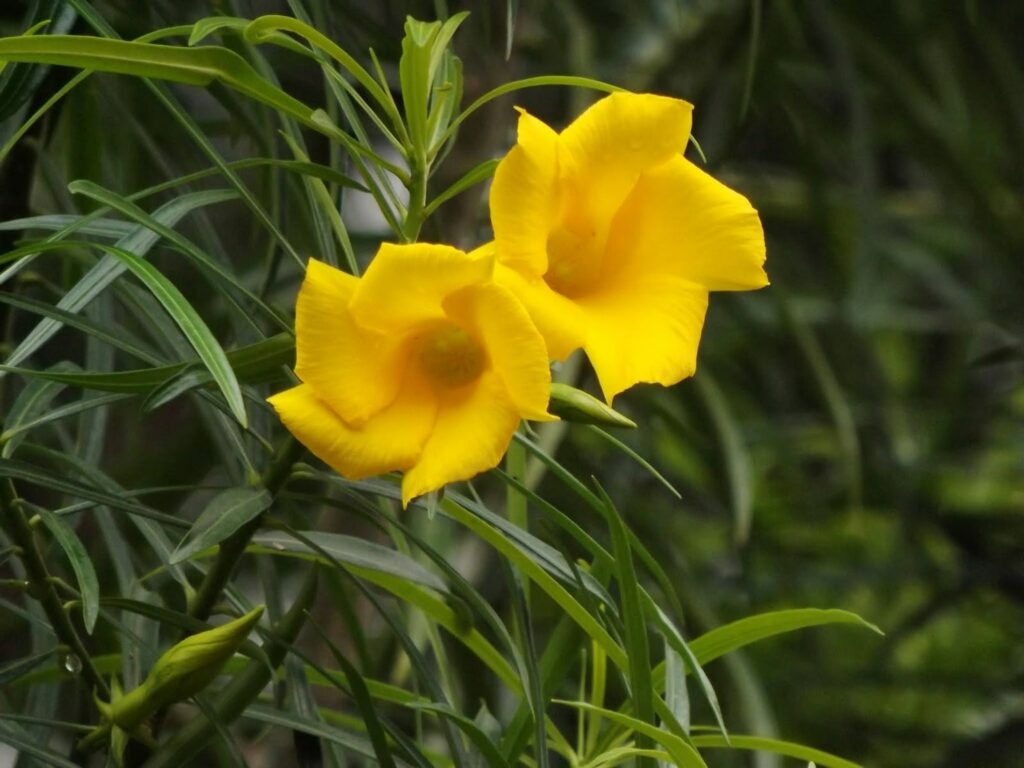
| Factor | Information |
| Ease of Growing | Easy ●○○○○ |
| USDA Zone | 9 to 11 |
| Light | Full sun |
| Soil | Well-draining, sandy to loamy soil |
| Watering | Moderate |
| Height | Up to 20 feet (6 meters) |
| Blooming Season | Year-round |
| Possible Risks | All parts are toxic if ingested |
The Yellow Oleander has a moderate growth rate, requiring regular watering and occasional pruning for maintenance. While popular for ornamental purposes, its toxic nature must be considered.
The name “thevetia” comes from the French monk André Thevet. Parts of the plant are used in traditional medicine with extreme caution due to its toxicity.
Sweet Acacia (Vachellia farnesiana)
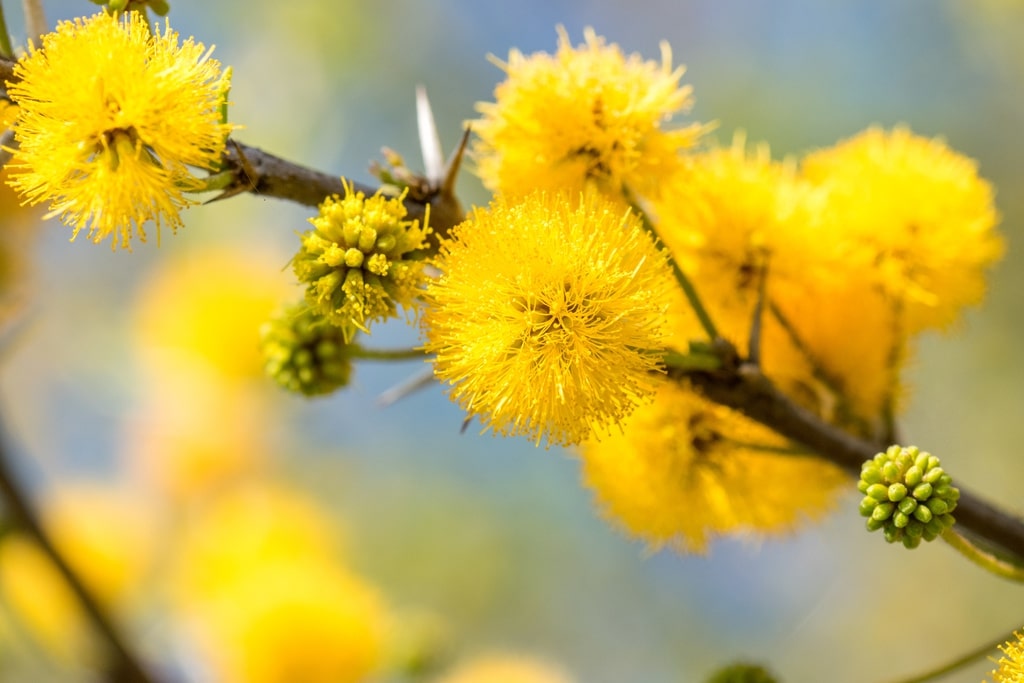
| Factor | Information |
| Ease of Growing | Easy ●○○○○ |
| USDA Zone | 8 to 11 |
| Light | Full sun |
| Soil | Well-drained, sandy to loamy soil |
| Watering | Low to moderate |
| Height | 10 to 15 feet (3 to 4.5 meters) |
| Blooming Season | Late winter to early spring |
| Possible Risks | May attract pests like spider mites |
The Sweet Acacia is a small tree loved for its fragrant flowers and fine leaves. Used ornamentally and for erosion control, it’s also a source of dyes and perfumes.
It’s recognized for its scent reminiscent of almonds or honey. This tree is native to the southwestern United States, Mexico, and Central America.
Yellow Jacaranda (Peltophorum dubium)
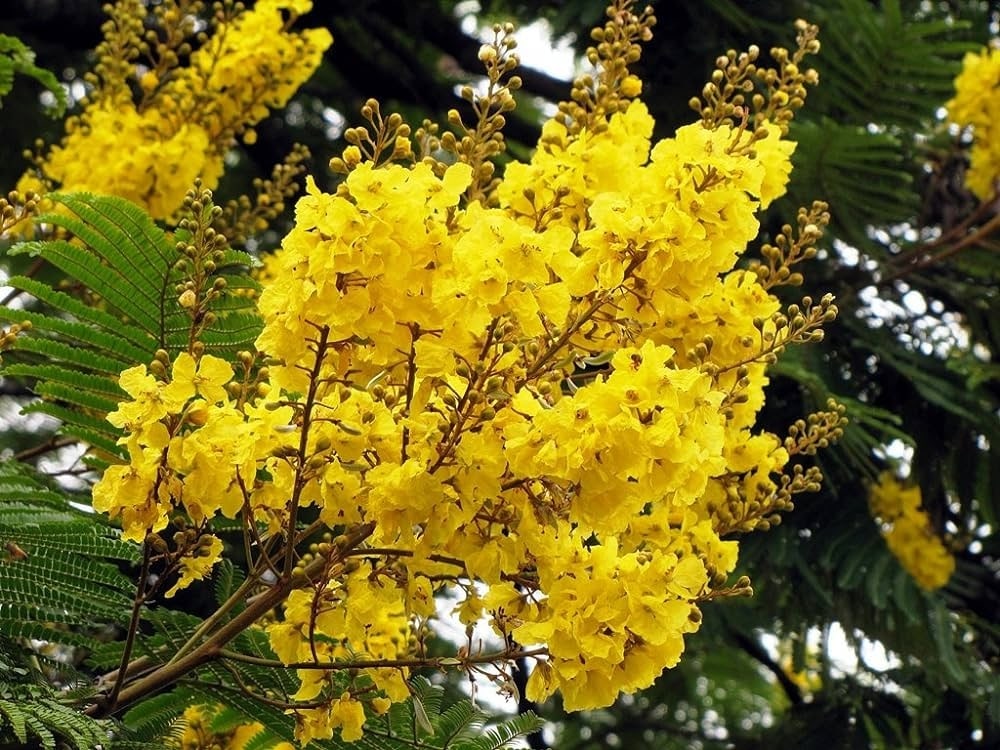
| Factor | Information |
| Ease of Growing | Easy ●○○○○ |
| USDA Zone | 10 to 11 |
| Light | Full sun |
| Soil | Well-draining, sandy to loamy soil |
| Watering | Moderate |
| Height | 20 to 40 feet (6 to 12 meters) |
| Blooming Season | Late spring to early summer |
| Possible Risks | None significant |
The Yellow Jacaranda has a moderate to fast growth rate, quickly becoming a prominent and attractive tree in no time. While loop-maintenance, occasional pruning may enhance its overall appearance.
It’s commonly used for aesthetics in gardens and parks as it stands out with its attractive flowers. Despite the name, it’s not closely related to true Jacaranda trees.
Yellow Silk Cotton Tree (Cochlospermum religiosum)
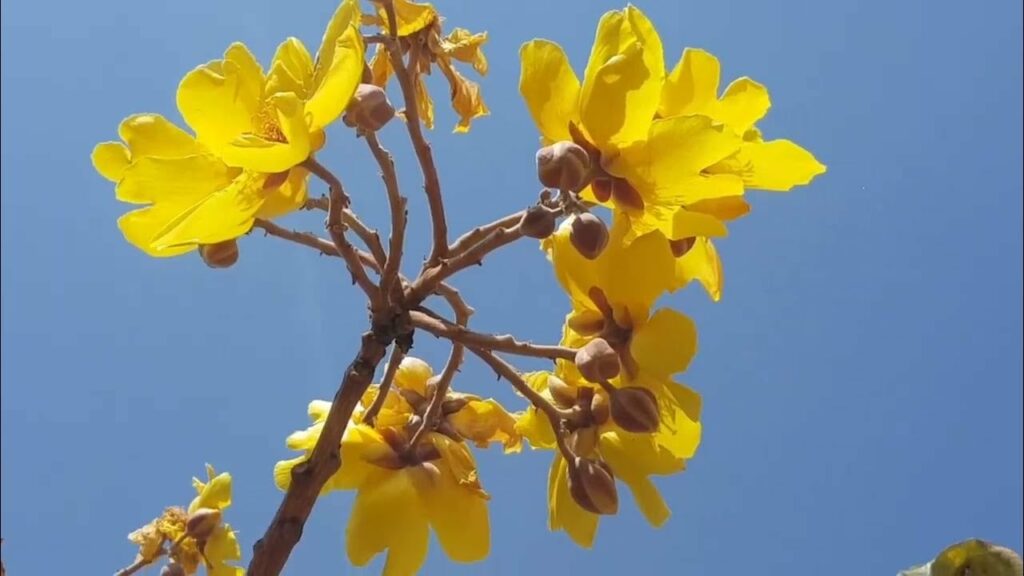
| Factor | Information |
| Ease of Growing | Moderate to Difficult ●●●●○ |
| USDA Zone | 9 to 11 |
| Light | Full sun |
| Soil | Well-drained soil |
| Watering | Low to Moderate |
| Height | Up to 30 feet (9 meters) |
| Blooming Season | Late spring to early summer |
| Possible Risks | Sensitive to frost |
The Yellow Silk Cotton Tree is a deciduous tree loved for its yellow flowers and distinct seed pods. The tree has a moderate growth rate, benefits from occasional pruning, and has cultural uses.
The seed pod fibers are used for ropes and stuffing. It’s known as “Jangli Badam” in India.
Goldenrain Tree (Koelreuteria paniculata)
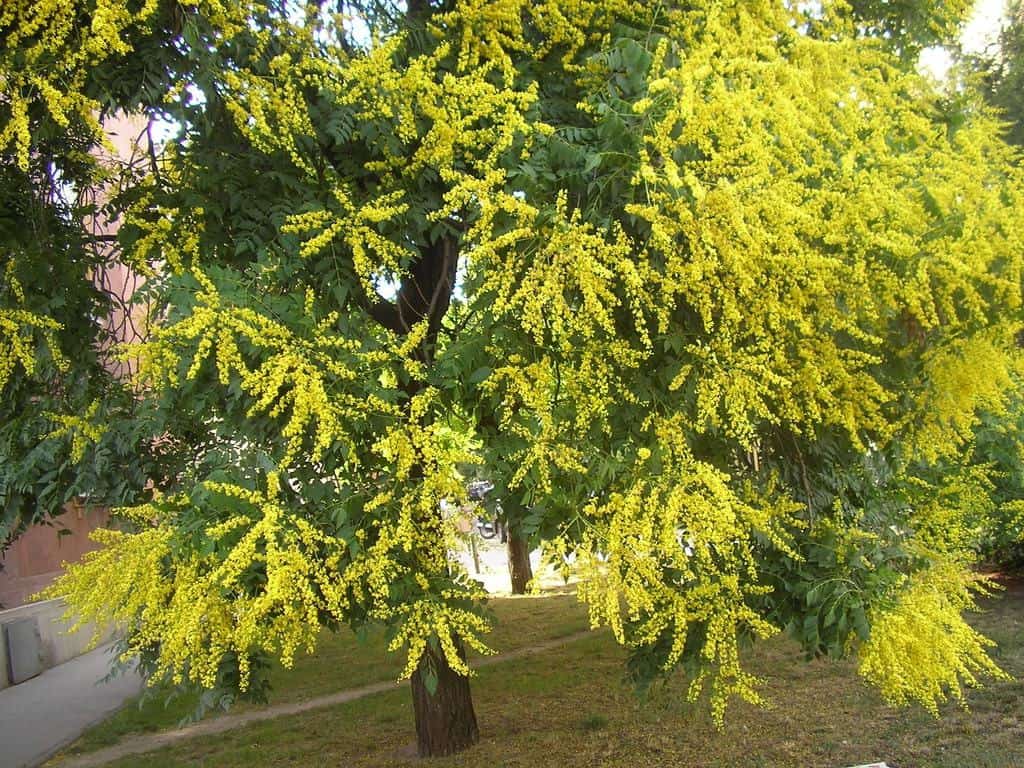
| Factor | Information |
| Ease of Growing | Easy ●○○○○ |
| USDA Zone | 5 to 9 |
| Light | Full sun |
| Soil | Well-drained soil |
| Watering | Moderate |
| Height | 30 to 40 feet (9 to 12 meters) |
| Blooming Season | Summer |
| Possible Risks | Potential for self-seeding |
The Goldenrain Tree is a deciduous tree with yellow flowers and lantern-like seed pods. While generally low-maintenance, occasional pruning is beneficial to manage shape and remove dead branches.
Commonly used for ornamental purposes, these trees are admired for their aesthetic appeal, especially during the flowering season. The unique seed pods resemble small Chinese lanterns, inspiring the tree’s name.
Yellow Buckthorn (Rhamnus frangula ‘Aspleniifolia’)
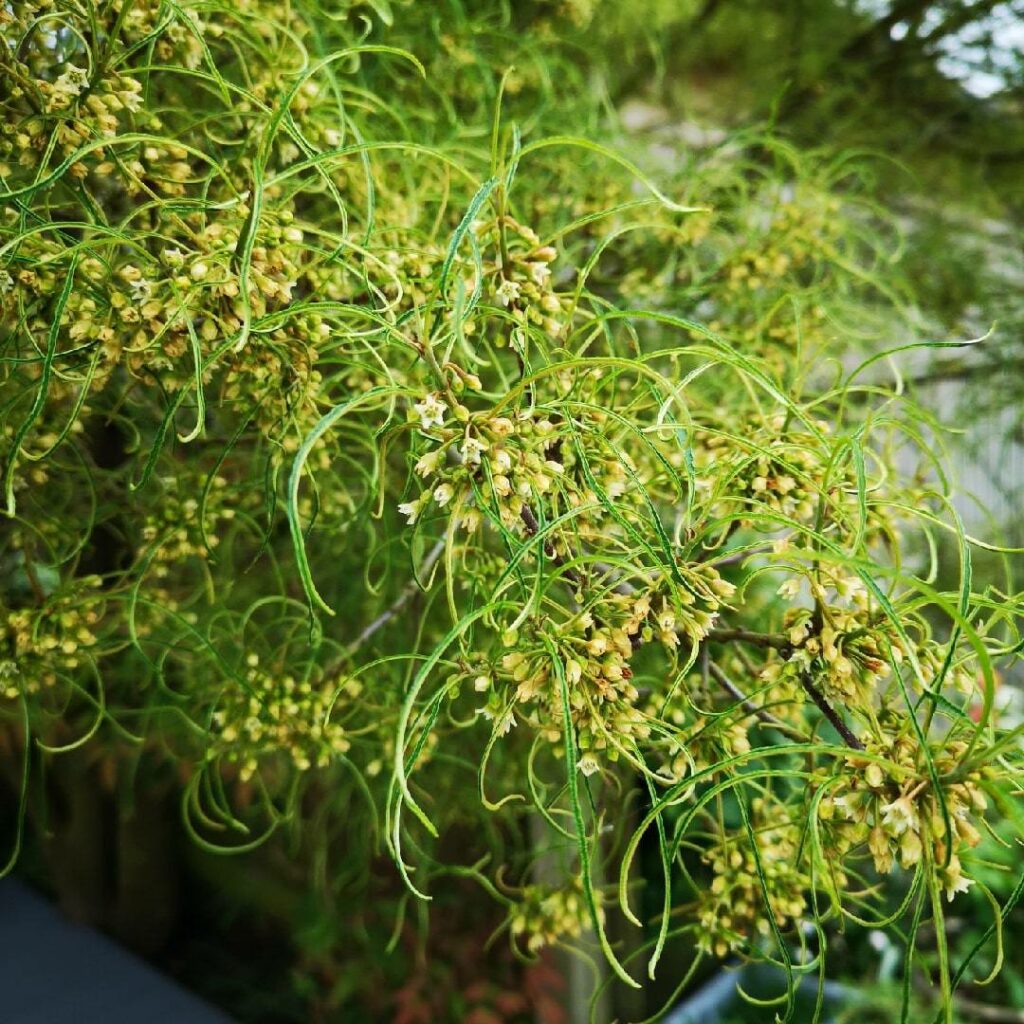
| Factor | Information |
| Ease of Growing | Easy ●○○○○ |
| USDA Zone | 2 to 8 |
| Light | Full sun to partial shade |
| Soil | Well-drained, moist soil |
| Watering | Moderate |
| Height | 10 to 15 feet (3 to 4.5 meters) |
| Blooming Season | Late spring to early summer |
| Possible Risks | Can be invasive in some regions, toxic berries |
Yellow Buckthorn is a fast-growing deciduous shrub with yellow-green fern-like foliage and a compact size. It’s easy to maintain, but be cautious about its invasive nature, and avoid the toxic berries.
The ‘Aspleniifolia’ variety is often used as a hedge or ornamental shrub. It adapts well to different soil types, making it suitable for diverse garden conditions.
Yellow Tabebuia (Tabebuia ochracea)
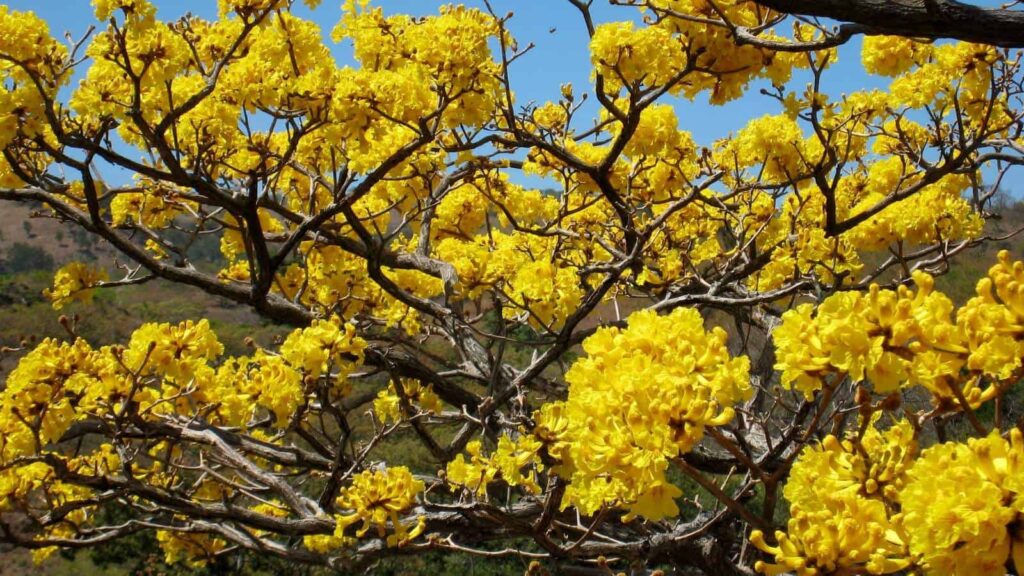
| Factor | Information |
| Ease of Growing | Easy ●○○○○ |
| USDA Zone | 10-11 |
| Light | Full sun |
| Soil | Well-drained, sandy to loamy soil |
| Watering | Moderate |
| Height | 20-40 feet (6-12 meters) |
| Blooming Season | Late winter to early spring |
| Possible Risks | None significant |
Yellow Tabebuia grows well in full sun and well-drained soil. It’s pretty low-maintenance and poses no significant risks, making it ideal for gardens and urban landscapes.
With a moderate to fast growth rate, it establishes quickly and needs minimal care once established. Used ornamentally, it also provides durable wood for construction.
Canary Island Date Palm (Phoenix canariensis)
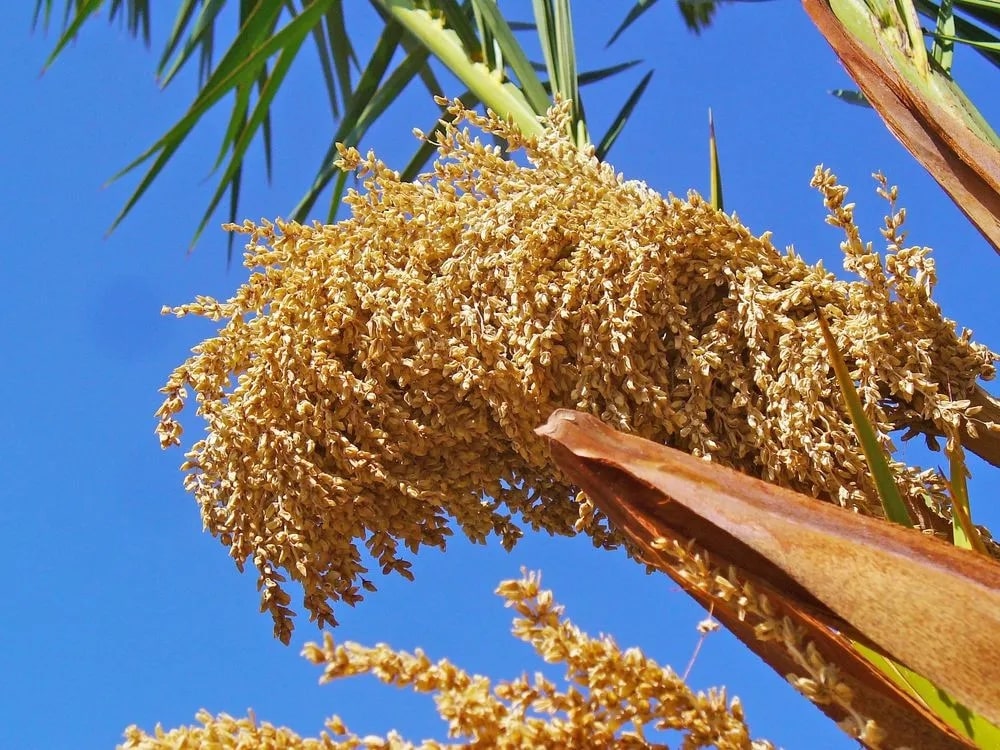
| Factor | Information |
| Ease of Growing | Easy to Moderate ●●○○○ |
| USDA Zone | 9 to 11 |
| Light | Full sun |
| Soil | Well-drained, sandy soil |
| Watering | Moderate |
| Height | Up to 65 feet (20 meters) |
| Blooming Season | Spring to summer |
| Possible Risks | Susceptible to Fusarium wilt |
The Canary Island Date Palm is a tall, iconic tree that grows moderately fast. Often used for ornamental purposes, it’s also found in urban areas and parks.
Fun fact: its seeds are used for edible oil, and it’s culturally significant in the Canary Islands.
Golden Trumpet Tree (Handroanthus chrysotrichus)
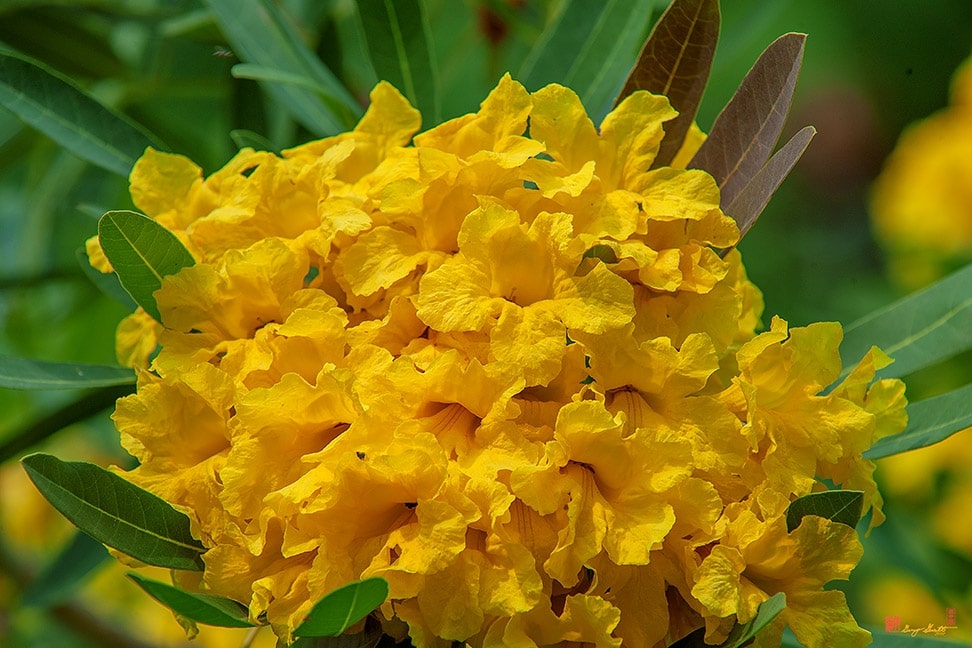
| Factor | Information |
| Ease of Growing | Easy to Moderate ●●○○○ |
| USDA Zone | 10 to 11 |
| Light | Full sun |
| Soil | Well-draining, sandy to loamy soil |
| Watering | Moderate |
| Height | 30 to 50 feet (9 to 15 meters) |
| Blooming Season | Late spring to early summer |
| Possible Risks | None significant |
The Golden Trumpet Tree needs moderate care, occasional pruning, and moderate watering. It’s mainly for decoration and has durable wood used in woodworking.
Its scientific name refers to the gold hairs on young shoots and buds. It’s part of the Bignoniaceae family, like Jacarandas and Catalpas.


